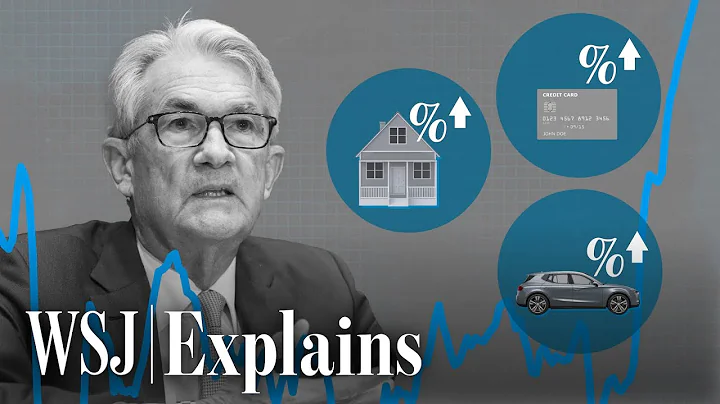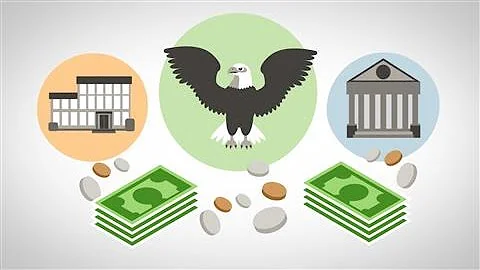The fundamental reason is that the misalignment of the economic cycles of the two countries has led to the deviation of monetary policies
The U.S. Federal Open Market Committee (FOMC) recently announced the latest interest rate resolution, raising the benchmark interest rate by 50 basis points to a range of 0.75%-1.00%, the largest increase since May 2000. The rate hike was ; in June, it began to shrink its balance sheet at a pace of 47.5 billion U.S. dollars per month, and gradually increased the upper limit of the balance sheet reduction to 95 billion U.S. dollars per month within 3 months. Previously, the market had strong expectations that the Fed would be hawkish, and the 10-year U.S. Treasury yield once rose to 2.99%. After the official announcement of interest rate hikes, the 10-year U.S. Treasury yield once again exceeded 3% to a high of 3.12% on May 6.
The U.S. interest rate hike may be due to the pressure of high inflation . From the perspective of the inflation transmission chain, the factors driving higher inflation this time are mainly the structural contradictions of the labor force, the recovery pressure of the supply chain, and the geopolitical factors of the Russia-Ukraine conflict. Influence. The inverted interest rate differential between China and the United States has a certain impact on the domestic economy. This article focuses on analyzing the current macro cycle of the global economy and its impact on the subsequent market from the two perspectives of the long- and short-term U.S. bond yield spread inversion and the Sino-US interest rate inversion.
A The inversion of the spread between long- and short-term U.S. bond yields
The problem with the spread structure of U.S. bonds has been receiving widespread attention. The long-end U.S. bond yield can generally be understood as the rate of return required by long-term assets , while the short-end U.S. bond yield can be understood as the rate of return required by short-end assets. It is also a common indicator that can reflect market liquidity. One, and in most cases, long-term and short-term U.S. bond yields move in the same direction.
In the past 20 years, there have been three periods of inversion between the 10-year U.S. bond yield and the 2-year U.S. bond yield: the first period started in mid-2006 and ended in mid-2007, lasting about a year; The second period started in May 2019 and ended in February 2020, lasting about 9 months. The first section was before the global financial crisis, and the second section was affected by the COVID-19 epidemic and was reflected simultaneously with the fermentation of the epidemic. The third paragraph appeared in early April 2022. At that time, the situation between Russia and Ukraine was fermenting and energy prices rose sharply.

The picture shows the trend of U.S. Treasury yield spreads

The picture shows the U.S. bond yields of different maturities
By analyzing the difference between the 10-year U.S. bond yields, we can find that this round of inversion of long-term and short-term U.S. bond yield spreads is consistent with The difference before was that the interest rate spread between 10 years and 2 years was inverted, but the interest rate spread between 10 years and 3 months widened, and the trends of the two formed a split. Thinking solely from the perspective of interest rate inversion, the first scenario is that the 10-year U.S. bond yield declines, and the interest rate inversion caused by the rise in the 2-year U.S. bond yield; the second scenario is that the 10-year and 2-year U.S. bond yields are inverted. U.S. Treasury yields were all higher, but the 2-year U.S. Treasury yield rose more sharply. The first situation often occurs when certain risks have emerged in the macroeconomy, and interest rate inversion occurs as a result of monetary policy trying to compensate for the risks that have occurred. The current situation is more similar to the second situation. Affected by the recent Federal Reserve interest rate hike , monetary tightening will suppress future long-term asset returns more than short-term ones. This is reflected in the U.S. bond yields, which means that the long-term U.S. bond yields are less sensitive, rising more than The short end is slower. Judging from the split between the two types of interest rate spread curves, the market's confidence in the short-term recovery of the U.S. economy is still strong, and the U.S. economy is not as bad as imagined.
Analyzing from the perspective of the Federal Reserve's interest rate hike, the Federal Reserve has a clear attitude towards solving inflation and hopes to curb inflation through a series of actions such as raising interest rates and shrinking its balance sheet. There are two main factors causing inflation in this economic cycle: on the one hand, labor structure issues; on the other hand, supply chain issues.
In terms of labor structure, the most direct impact of the COVID-19 epidemic is the challenge to companies resuming work as scheduled. During the epidemic, the United States implemented four rounds of fiscal stimulus policies starting in early March 2020, totaling up to US$2.6 trillion. Among them, the third round of fiscal stimulus is the largest, with a total amount of US$2.2 trillion, accounting for approximately 85% of the total amount.While the first two rounds of stimulus mainly involved anti-epidemic medical care, the third round of fiscal stimulus focused on unemployment assistance, with loan assistance to low- and middle-income residents and small and medium-sized enterprises totaling US$1.72 trillion, accounting for 8% of the United States' annual GDP. It was not until June 2021 that various states announced the withdrawal of relief subsidies for the unemployed.
The governments of various states in the United States have provided unemployment assistance for 15 months. Different levels of subsidy policies have given workers a certain degree of bargaining power. As a result, workers who have received subsidies are less willing to resume work and production after the marginal improvement of the epidemic situation. Enterprises are facing The difficulty in recruiting workers has led to marginal wage increases, which in turn has led to concerns about inflation. From the data, we can also find that the transmission chain of labor shortage-marginal wage increase-high inflation has been verified.
The structural contradiction of the labor force in this economic cycle is a legacy of history. After the global financial crisis in 2008, the economic market structure of the United States began to transform. It can be seen from the situation in the past 10 years that the economic crisis has brought about a large number of unemployed people, especially workers in various industries with relatively low education and relatively high age, who lack certain salary bargaining power and have turned to fill the gap in the service industry, superimposing overall employment. As the gap has been squeezed, this group of people who lost their jobs due to the financial crisis have poured into industries with relatively low bargaining power, such as transportation, warehousing, and hotels, such as the service industry. Judging from the income growth data, it is also the main endogenous reason for the growth rate of residents’ low income in the past 10 years.
Let’s look at the inflation data again. After the epidemic, the United States began to enter the inflation expansion range in May 2020. Domestic demand driven by fiscal stimulus led to an increase in overall commodity prices. However, this round of inflation will not reach its peak until the end of the third quarter of 2021. Sexual peak. Through the dismantling of CPI, we believe that in addition to energy, the most obvious component that drives CPI at this stage is the recovery of the service industry. The main contradiction at this stage is the contradiction between higher inflation and lower residents' income growth, and the pace of the two does not match. High inflation is driven by the large number of people returning to work in the service industry, so the sustainability of this sub-item is not strong. We speculate that there will be two interpretation paths in the future. One is that labor unions instigate labor strikes and force the wage growth curve to move upward; the other is that inflation peaks and falls, but income growth still shows no significant improvement. In terms of
supply chain, whether it is the current complex international situation or the impact of the epidemic, it has a huge disruption to the normal operation of the global economic integration of the supply chain. First of all, the conflict between Russia and Ukraine has had a severe impact on the global energy pattern. The European Union has upgraded its sanctions to the point where it plans to no longer purchase Russian crude oil, and this plan has been formally submitted to the committee for discussion. We believe that the supply chain problem has the following main logic:
First, the more developed economies that recover faster from the global epidemic are not only more advanced in medical resources, but also have greater resilience in their own internal economies. Therefore, there is a time lag in the recovery of the epidemic between demand countries with relatively developed economies and supply countries relying on resource endowments, which in turn creates a mismatch between supply and demand. With developed economies taking the lead in recovery and relatively clear demand, when the supply side will recover has become the inflation "anchor" we focus on.

The picture shows the Baltic Dry Bulk Index
Second, the liquidity released by various countries to stimulate the economy in the post-epidemic era is relatively loose, which is also one of the reasons that greatly stimulates the rise in commodity prices. But what needs to be made clear is that there are different time lags in the transmission of policies between different economies. If the supply and demand within an economy cannot be balanced, and the transmission from the upstream to the middle and downstream is not smooth, this kind of similar to import demand will occur. Spillover effect , and determining the strength of the spillover effect requires anchoring an important link that runs through the upstream, middle and downstream - transportation capacity. From the data point of view, regardless of seasonal factors, the freight index is still high. The rising costs caused by freight rates may inhibit the expansion of demand to a certain extent, thus becoming a constraint on inflation.
BHow long will the inversion in the interest rate spread between China and the United States last?

The picture shows the comparison of 10-year treasury bond yields between China and the United States
The cause of this inversion in the interest rate spread between China and the United States is the divergence of monetary policies caused by the misalignment of the economic cycles of the two countries.On the one hand, my country has taken the lead in recovering from the epidemic, and domestic economic demand has grown significantly faster than other countries. Exports have sufficient resilience and manufacturing is growing rapidly, but stimulus policies were withdrawn early. Later, due to the disturbance of the real estate industry, there was a certain pressure on both the supply and demand sides, and monetary policy took the lead in shifting to the stabilization stage. On the other hand, the United States, Europe and other countries have had limited effectiveness in combating the epidemic, and are continuing to be infested by mutant strains, resulting in a slightly slower economic recovery. At this stage, judging from the U.S. capacity utilization rate and the recovery trend of the manufacturing industry, the U.S. economic recovery is in good shape. However, currently troubled by high inflation caused by high energy prices and the massive resumption of work in the service industry, the Federal Reserve has adopted a more hawkish attitude to control liquidity, and the path to raising interest rates and shrinking its balance sheet is already clear.
Over a long period of time, the trend of CSI 300 Index has followed the trend of Sino-US interest rate differentials, and the Sino-US interest rate differentials have led the trend of CSI 300 Index by 1 to 3 months. In the short term, it is less likely that the interest rate gap between China and the United States will continue to invert and narrow. Domestically, the government has proposed a target of achieving 5.5% GDP growth for the whole year. It is foreseeable that stable growth + widening credit will become the most powerful starting point. Expanding domestic demand and ensuring supply will help enterprises develop, and there is a high probability of boosting long-term asset returns. The rate is rising, that is, the 10-year Treasury bond yield has entered an upward range. Overseas, although the Federal Reserve has made clear the path for raising interest rates and shrinking its balance sheet, the market still has a certain degree of uncertainty about the intensity of subsequent interest rate increases. The probability of an upward trend in 10-year U.S. bonds in the short term is not expected to be high. In the medium to long term, inflation driven by energy prices will still depend on the global energy landscape, which will continue to put pressure on the cost side of upstream companies. At the same time, we need to be wary that high freight rates and logistics costs will force companies to decline in demand. Return on assets may decline. Under the combined effect of the two aspects, the interest rate gap between China and the United States may widen, and the domestic capital market will be boosted in the medium to long term.

The picture shows the comparison between the interest rate spread between China and the United States and the trend of the Shanghai and Shenzhen 300 Index
C Core contradictions and possible risk factors
In summary, the interest rate difference between the 10-year and 2-year U.S. bond yields inverted on April 1 , while the spread between the 10-year and 3-month U.S. bond yields has widened in the opposite direction. Abnormalities in such indicators may greatly affect the trend of the macro economy. First of all, the inversion of U.S. bond yields this time is that the 10-year and 2-year U.S. bond yields have risen together, but the 2-year U.S. bond yield has risen even more. We believe that we cannot conclude that the U.S. economy has turned into recession. On the contrary, in the short term, the U.S. economic performance is not as bad as imagined. Secondly, the U.S. labor force structure still has problems left over from history, and the influx of a large number of workers into the service industry is another factor driving up inflation. The mismatch between low growth in household income and high inflation may be the trigger for subsequent U.S. economic growth to be less than expected. Finally, there are still doubts about the on-schedule recovery of the supply chain, and high freight rates and logistics costs are the main risk points to focus on in the future. Based on the analysis of the inverted interest rate gap between China and the United States, we believe that the root cause of the inversion in the interest rate gap between China and the United States is the divergence of monetary policies caused by the misalignment of the economic cycles of the two countries. However, looking forward, we believe that the inversion or narrowing of the interest rate gap between China and the United States will continue. Less likely.
analyzes the current core contradictions mentioned above and predicts that the risk factors that may arise in the future are as follows: First, the situation between Russia and Ukraine develops beyond expectations, the global energy landscape is reshuffled, and inflation expectations rise sharply; second, the epidemic continues to disturb freight prices. The index remains high, forcing demand to decline to a large extent; third, the implementation of domestic credit credit is not as good as expected.

The picture shows the number of workers in the United States by age group (young, old)

The picture shows the number of workers in the United States by age group (middle-aged)

The picture shows the U.S. unemployment rate

The picture shows the U.S. CPI year-on-year data

The picture shows the income growth rate of U.S. residents
This article From futures daily





















